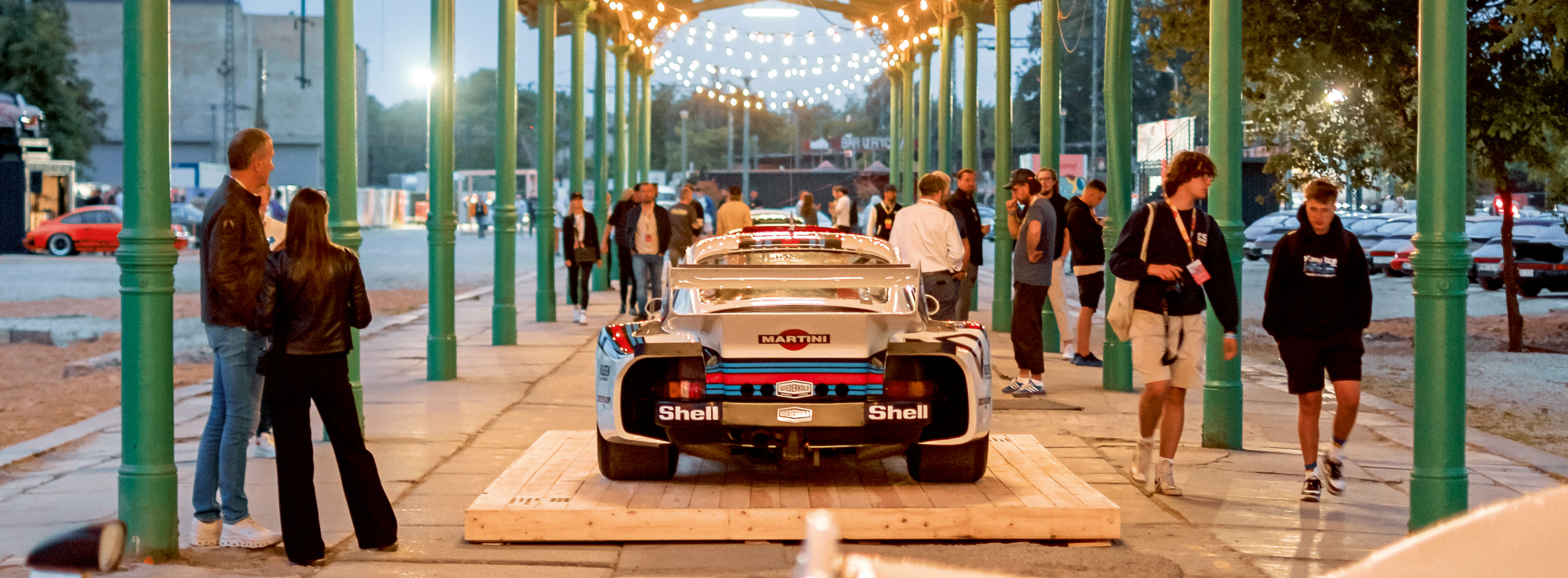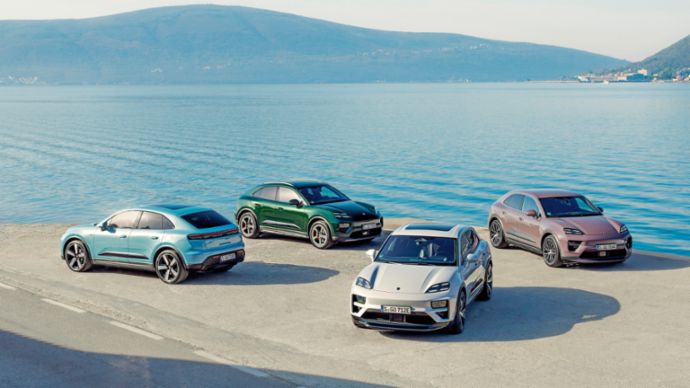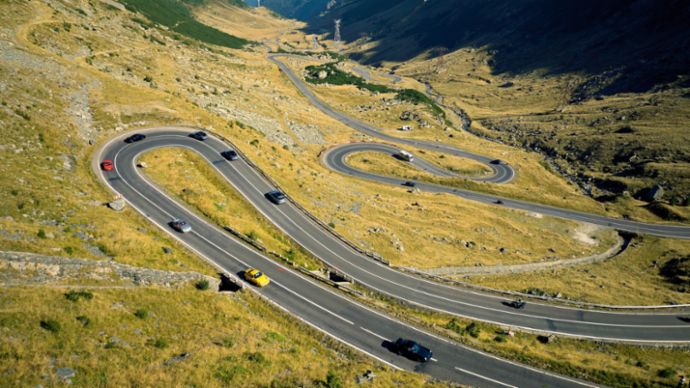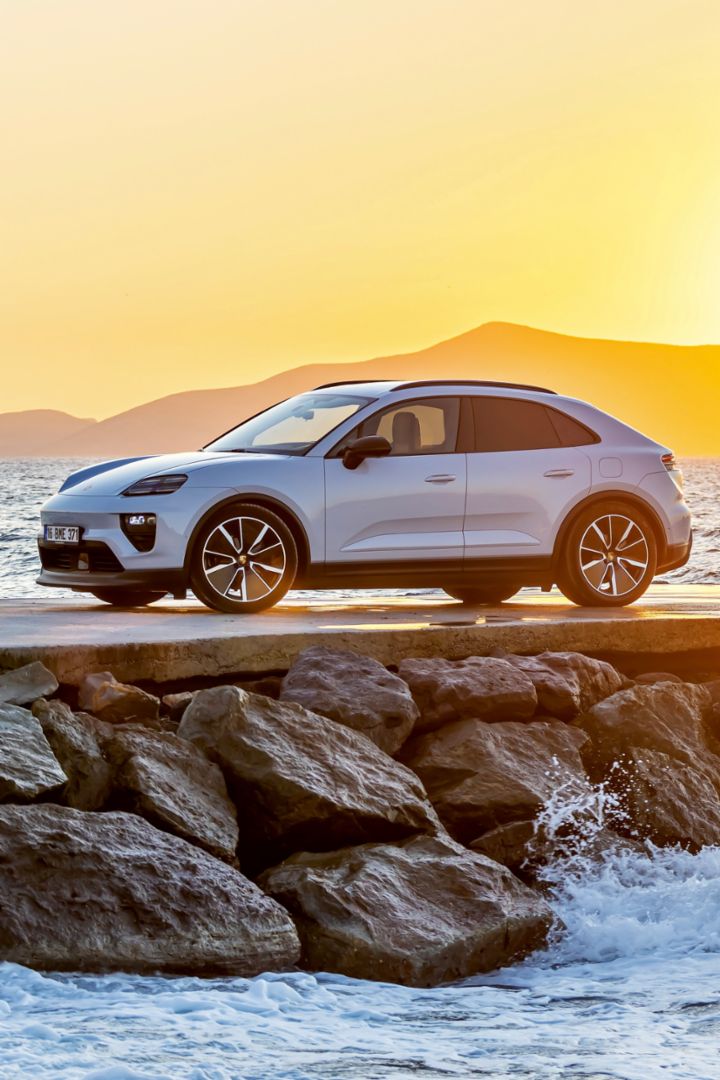Air to Breathe
At Luftgekühlt, everything revolves around air‑cooled vehicles. Passion for classic Porsche cars meets music, art, and people with special stories. This year, the first European stop for the event series established in California was the Polish city of Wrocław.
The DJs’ beats boom from the speakers while bars and food trucks are being set up all around. An extraordinary event is getting underway in the restored railway station in Świebodzki. The center point: a disused railway track that has been turned into a kind of catwalk for rare models like the Porsche 911 Carrera RS 2.7, the 959, and race cars like the 935. Strings of lights dangle above them like garlands. The atmosphere is reminiscent of an art or music festival. But rather than bands, the stars of the show here are approximately 200 air-cooled Porsche sports cars under private ownership and six vehicles provided by the Porsche Museum in Stuttgart-Zuffenhausen. They have made Wrocław their home for two days. Following western European stops in Munich and Oxfordshire in 2018, Luftgekühlt is now making its first appearance in eastern Europe, eagerly awaited by the Porsche community in Poland and neighboring countries.
Away from the hustle and bustle, Tadeusz Elwart leans against his platinum metallic Porsche 911 SC Targa (G-Series) built in 1981. His left wrist is marked with the words “Key on the Left” exactly where you can feel your pulse best. A coincidence? Hardly. Elwart’s tattoo stands for an invisible connection that everyone here has. The people here share a fascination for Porsche vehicles of the air-cooled era. Rather than originality, it’s individuality which is the most important thing for the classic models at this event. Many of the vehicles on display have been modified in line with their owners’ ideas – with imaginative designs, eye-catching rims, or tuned engines. “Everything is so relaxed here,” says the 37-year-old, who lives in a surf camp near the Hel peninsula on the Polish coast. “Everyone has a smile on their face and we all help each other.”


Colorful:
Many of the models on display cite the brand’s rich racing history. The Porsche Museum has contributed precious originals.There are major parallels between the surfer scene and the Luftgekühlt scene. Elwart’s friend Gustaw Lange says: “When you discover a passion, that’s worth a great deal. And in the same way that surfing connects us and makes us a big community, everyone here belongs here.” The two have combined their passion for surfing and Porsche in a joint project. In addition to his air-cooled 911, Elwart, who organizes the Polish surfing, skating, and car culture festival Hel Riders, owns a water-cooled 928 that he had converted according to his wishes. He christened the project “Surfari.” Lange came up with the design for it.
The two are proudly showing us photos of the vehicle when Patrick Long weaves his way through the four-wheeled models with his Porsche e-bike. Long comes from Southern California and remains an avid surfer to this day. His father was a surfer, too, while his brother is a professional skateboarder. As a long-standing Porsche works driver, the 43-year-old has always moved between different worlds. On the one hand, he has ties with the brand and its history in his capacity as a conventional race car driver, while on the other, he would meet his friends, who are architects and filmmakers, in California on the weekends. So he wanted to combine the two.
He therefore developed the Luftgekühlt idea together with his colleagues Jeff Zwart and Howie Idelson. “We wanted to create something that would excite people who have nothing to do with the scene,” explains Long, “as well as providing people who have Porsche running through their veins and who are familiar with every facet of the brand with some new input.” The idea was that the company’s heritage could not only forge a link to the past, but also serve as a gateway to the future. “Maybe one of the visitors to Luftgekühlt will buy a new Porsche model at some point,” he says. The meets aren’t about who can claim to have the most exclusive special equipment or the rarest vehicle. A 914 that’s been bleached by the Californian sun is parked here alongside a pristine ruby red 911 RS (964) from the Porsche Museum. “With the cars we choose, it’s never about the numbers,” Long says, “but about what you feel when you see the vehicle.”


Artistic synthesis:
The initiators of Luftgekühlt specifically look for places that have potential, and so the event deliberately sets itself apart from other vehicle shows. This concept has made the event series a global success.But why Poland of all places? Mateusz Klawiter, who organized the event together with the Porsche Poland team, had the same dream as Long – only in Polish. Apart from all the cars, he and his old bicycle are the most popular photo motif at the vast site. At the age of 20, the now 39-year-old managing director of a communications agency from Poznań invested all his savings in an original 911. He now owns a number of classic Porsche models. Klawiter contacted Long to bring Luftgekühlt to his home country. The coronavirus pandemic got in the way, so it took three years for the dream to come true. “I always wanted to be part of the Porsche family,” enthuses Klawiter, “and we’ve now brought 3,500 people together here. It’s a sellout! I get goose bumps thinking about it.”
Long found the idea charming precisely because Wrocław in southwest Poland isn’t necessarily the first city that comes to mind for such an event. And he found the stylishly restored railway station especially charming. “We weren’t interested in using a racetrack or a golf course. We love places that have potential,” he explains. His friend Jeff Zwart, Creative Director of Luftgekühlt, adds: “Throwing yourself into a new scene, a new culture, a new country is fun. We have good music, good food, and historically important vehicles – all the things that bring people together.”

Luftgekühlt community:
Event founders Jeff Zwart and Patrick Long; organizer Mateusz Klawiter, surfer Tadeusz Elwart with his wife Klaudia and his friend Gustaw Lange; Krzysztof and Joanna Grausch.

“All of our hearts have a very specific shape.” Joanna Grausch
Maciej Kukieła would probably have driven the length and breadth of Poland just to be there with his 911 (964) built in 1990 in the Blaupunkt design from the Carrera Cup. A few minutes before the event begins, duster in hand, he is still searching for that last speck of dust. When it rains, he doesn’t drive on principle. “It’s an obsession,” says the 45-year-old owner of a furniture company. He saw the design of the Cup 911 for the first time at the Porsche Museum in Stuttgart and he took the opportunity to measure every millimeter of the look with a ruler while attending an event. The wrap was finished just two days before the Luftgekühlt meet. Kukieła knows he must have internalized quite a lot of the Porsche legend to come up with ideas like this and implement them with such enthusiasm.
“All of our hearts have a very specific shape,” says a woman in a white denim pantsuit, pointing to the Porsche crest on the hood of a 911 (964). Joanna Grausch is here with her husband Krzysztof. They have been married for 35 years and have already made pilgrimages to Luftgekühlt events in the past as well as to Rennsport Reunion in the USA. Back at home, they have a view of the glazed garage door directly from the breakfast table. Among other things, the garage houses a lemon-colored 911 S 2.4 (original 911), a 911 (964) with an outlaw-look wrap, and a white 911 (G-Series), which the Luftgekühlt visitors are allowed to sand down to the bare metal as an art project. The vehicle will then be covered with a transparent finish and converted into a safari version – the creation of another air-cooled one-off.

Legends:
Race cars from the 1970s are a hit at this year’s Luftgekühlt event, too – such as this Porsche 917/10 developed for the North American Can-Am series.The Grauschs are a prime example of how nobody here can be pigeonholed. Joanna, whose friends all call her Monica Bellucci like the Italian actress, is wearing a chic scarf and is driving a 911 Carrera 4 GTS (991) from the paint-to-sample program in Superior Red Metallic. Krzysztof, on the other hand, could be the lead singer in a rock band with his mid-length hair and his T-shirt. In the same way that the two seem very different at first glance, all the people who come together here under the umbrella of the Porsche brand are different. Joanna sums it up: “There’s simply a lot of air here.”
Consumption data
718 Boxster GTS 4.0
718 Cayman GT4 RS
-
13 l/100 km
-
295 g/km
-
G Class
911 GT3 (2023)
-
13.0 – 12.9 l/100 km
-
294 – 293 g/km
-
G Class
911 GT3 RS
-
13.2 l/100 km
-
299 g/km
-
G Class
911 Turbo
-
12.3 – 12.0 l/100 km
-
279 – 271 g/km
-
G Class
Macan Electric
-
19.4 – 16.8 kWh/100 km
-
0 g/km
-
A Class
Macan Turbo Electric
-
20.7 – 18.4 kWh/100 km
-
0 g/km
-
A Class




